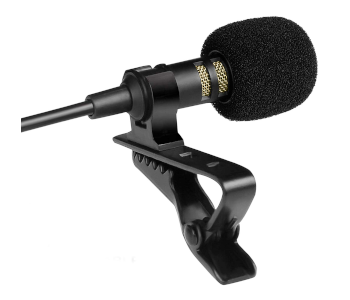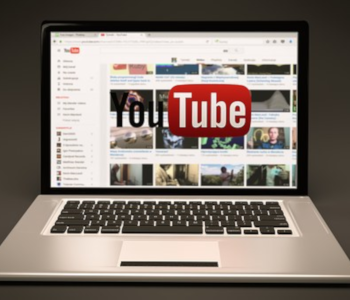How to Start a Vlog – Essential YouTube Vlogging Career Tips
The internet is a wonderful invention – it lets you reach millions of people or find the few kindred spirits who share your love of underwater basket weaving. Whatever your interests, there’s a group of people out there willing to hear what you have to say, and a vlog is the best way of reaching them.
A vlog or video log is a self-made video that features a person and some aspect of their life. It can be embedded into a regular blog, but self-contained vlogs on YouTube are currently the most popular format. A classic vlog documents your daily activities, but you can also use one to educate and entertain, or promote your business. There are vlogs dedicated to pranks, travel, product unboxing, and everything in-between.
Vlogging is a rewarding hobby that develops a versatile skillset. Sticking with it will teach you how to produce videos & manage related equipment. You’ll learn how to market yourself & your ideas, grow a following, and how to leverage current trends to your advantage. The most successful vloggers are famous the world over and make millions doing what they love. Want to join their ranks? Then read on and discover how to get started.
1. Prep Work

You want to reach millions of viewers eventually and maybe even start making money off your vlog? Then you can’t approach its creation haphazardly! Here are the key things you should consider before ever hitting the record button.
What is your vlog’s theme?
The first thing you need to establish is the theme of your vlog. Do you own a business and want to use vlogging as a means of attracting new customers? Maybe you’re passionate about cooking and want to teach others your secrets. Or perhaps you just want to live and document your life for an interested audience.
Whatever your interests, the most important thing to do early on is to stick to them. You won’t get far if you publish videos that are in no way related to each other or don’t have an overarching theme. You want to start building a community of people who’ll subscribe to your channel and be delighted to watch every new bit of content you create. That’s why it’s important to figure out your niche.
A niche is a specialized interest that attracts like-minded individuals. It could be Indian food, woodworking, or playthroughs of retro games. Any niche can work as long as you’re passionate and knowledgeable about the subject matter.
You can start to conceptualize your vlog by writing out your interests & strengths and then choose what fits best. Keep in mind that vlogging is a long process. You might end up publishing hundreds or even thousands of videos down the line, so make sure that they’re going to be about something you genuinely care about.
Learn from the pros
Once you’ve settled on your channel’s identity, it’s time to check out successful vloggers in your niche and in general. It’s worth spending a few days actively watching vlogs and taking notes on what their authors are doing right. Here are a few questions you’ll want to find the answers to:
- What is the tone of the vlog?
- How does its author engage with the audience?
- What subject matter do they cover?
- How long are the videos?
- How often are new videos added to the channel?
- Are the videos scripted or free-form?
- What do a single vlogger’s videos have in common?
- What similarities do videos in your niche share?
Getting answers to these questions will give you a good idea of how to structure your first videos. But remember, it’s fine to get inspired by the pros; blatantly copying their content and approach won’t get you far.
Apart from focusing on what others are doing, it’s crucial to note what they are NOT doing. Is there a segment of the niche no one is addressing? Do you know of a more engaging approach to covering the same material? Focusing on something unique you can offer from the start will pay dividends in the long run.
2. Gear

Unless you’re growing your business or insist on excellent quality right off the bat, you don’t need to invest a lot in vlogging equipment at first. Smartphone cameras can produce vlogs of acceptable video quality – just make sure you’re shooting horizontally since no one likes watching vertical videos on their monitors. A webcam is another excellent starting tool and part of every modern laptop.
You’ll want to invest in more specialized gear to bump up the technical quality of your content as your channel grows. We’ve created an in-depth guide on everything you’ll need, but here’s a quick recap on the gear you’ll eventually want to have.
A microphone
A better microphone should be your first investment since smartphone and webcam mics are of poor quality. You don’t need to go all out – a great-sounding lavalier microphone costs less than $25. You clip it onto your clothing and instantly get higher sound quality without having to worry about positioning. Do you shoot many vlogs outdoors? Then consider investing in a shotgun mic with a deadcat.
Lighting
Don’t make the novice mistake of underestimating the effect lighting has on your videos! Something as simple as turning your bedroom light on can make a vlog easier to watch and more engaging. There are lots of lighting types to choose from – on-camera lights, ring lights, whole lighting setups… Learn about the effects of lighting in videography and pick out a solution that works for you.
Camera
A new camera may be your most significant investment, so do some research before buying it. You’ll want a camera that corresponds with your vlogging habits. DSLRs and mirrorless cameras are the most expensive but prized for their diversity and fantastic video quality. Outdoor vloggers will benefit most from a compact or action camera. You can even invest in a premium web camera which will improve video quality considerably but won’t break your bank.
Tripods, selfie sticks, & gimbals
Nothing says amateur like shaky footage, which is why a stabilization device is essential. Tripods are useful in studio environments and when you plan on filming from a fixed angle. Smaller ones like the JOBY GorillaPod 5K are flexible and let you position the camera at odd angles. Selfie sticks and gimbals help you maintain a steady shot while in motion. Gimbals are particularly adept at keeping your footage smooth even if you’re moving about or are actively involved in an activity you’re recording.
Video editing software
While vlogs shot in one take can be charming. However, weaving multiple takes into an organized story lets you get creative as well as edit out embarrassing mistakes. There are excellent free solutions for PC & Mac users alike. You might want to look into paid software like Final Cut Pro X or Adobe Premiere pro later on too.
Image editing software
The thumbnail is a small but important part of your video’s overall presentation. You’ll need image editing software to create one since learning the basics is much less expensive than hiring a pro. GIMP is a popular free program, while Adobe Photoshop is the best paid solution out there.
3. Filming your first vlog

Got a killer idea and all the equipment you need? Great, then it’s time to create your first video! Doing so can be a daunting experience, but you have to start somewhere. Once you establish an efficient workflow and have a few videos under your belt, vlogging will become second nature.
Create a concept
Your first video doesn’t need to be meticulously scripted or perfectly framed. Its most important task is to give you hands-on experience. That being said, there’s no use going in blind. Start by making a concept that includes a rough outline of the video, what topics you want to cover, and how you’ll present them.
Don’t know what specific topic to cover yet? There are two paths you can take. One is to pick a topic within your niche that you’re knowledgeable about and start talking. If you’re running a business vlog, start by explaining what you do and offering helpful tips on a narrow subject. If you’re a lifestyle vlogger, your first topic can be something as simple as your weekly meal plan or your morning makeup ritual.
Another effective strategy is to check out the trending topics in your area of interest and cover one while the iron is hot. Google Trends is an invaluable tool that tracks current searches for millions of keywords. You can use it to assess people’s interests in general and in your niche in particular through filters. Find a topic that generates a lot of buzz, do some research on it, and contribute your unique take.
Shoot the video
It’s finally time to press that Record button. Having butterflies in your stomach is natural, but try to relax and you’ll do fine! This is where taking the time to do the prep work pays off – you’ll feel more at ease and make fewer mistakes if you’re prepared. Don’t overdo it though; the audience will know if you’re monotonously reading from a script and quickly lose interest.
The best thing you can do is find a balance between scripted and freeform content. Have some general talking points and specific things you want to say, but don’t shy away from improvisation. Audiences respect a genuine personality and exciting content more than technical perfection, especially when you’re starting out. Be friendly, enthusiastic, and let the audience know you’ll be happy to answer questions or engage in quality discussion. Starting to build a bond early will help you garner a loyal following quicker.
Edit the video
The editing phase is one more opportunity to set yourself apart. Film more content than you need to and stitch together the interesting bits into an engaging video. Add some royalty-free music and consider experimenting with transitions or other effects. It’s best to use a program like iMovie if you’ve never edited a video before since it is beginner-friendly and guides you in learning the ropes.
4. Getting your vlog out into the world

Create a YouTube account
Your vlogs need to be stored online for others to access. YouTube is by far your best option for several reasons. It has over a billion users, is free to join, and lets you monetize videos when you get good enough. There are alternatives like Vimeo, but these don’t have nearly as much outreach or require paid subscriptions for advanced features.
Creating an account on YouTube is easy. Chances are you already have one since you can access YouTube with your Google account. Not sure whether you’re logged in? If you can post comments, then your YouTube account is already active and you have a channel.
Clicking on the “Sign In” button will bring up a list of options if you don’t have an account. You’ll be prompted to use an existing Google account or create a new one. After that’s done, you can begin uploading videos.
You can have multiple channels per Google account. That way, you can cover different niches when you start to branch out or have separate public and personal channels. Give some thought to naming your vlogging channel. Its name should be relatively short and catchy. Avoid using unnecessary symbols & numbers, and pick a name that’s in line with your brand identity. If the only brand you’re promoting is yourself, make that obvious.
Upload your first vlog
YouTube’s uploading process is straightforward. Click on the button that looks like a camera with a plus sign in it, and select “Upload Video”. You’re then prompted to select a file from your computer. Selecting the file brings you to another screen where you fill out information on the vlog like its title, description, thumbnail, and tags. Complete these and click on the “Publish” button to upload the video. Filling out the requested information is trickier than it looks and has a direct impact on your vlog’s visibility.
Title
The title needs to be informative and eye-catching. It has to please both YouTube’s ever-shifting search algorithms and the discerning viewer. The vlog will do better if you include search-optimized keywords at the beginning of the title and follow them up with an intriguing description of the contents.
Let’s say you’re into 3D design and want to create a tutorial series. You can start the title with a solid keyword that will please the algorithm. “3D Modeling Tutorial” is a good fit and will ensure a high ranking. Then you can get creative and add more info that will get an actual person to click on the link. Something like “3D Modeling Tutorial: Learn the Basics of Modeling in 5 Easy Steps” lets the audience know what they can expect and might be precisely what they’re interested in watching.
Although you may be tempted, refrain from using clickbait titles. They’re tacky, overly dramatic, and people really dislike them. It’s OK to play up your content but stay away from sensationalism and downright lies. These might seem effective at directing people’s attention – and they are to an extent. However, you’ll want your channel to stand on the quality of its content, not a fad that will do more harm than good.
Description
The description field is where you can let loose and write everything the audience might wish to know about the vlog. Always create a thorough description as it is one of the factors the algorithms use in determining your video’s category and ranking.
Later on, the description field will also be your main space for links. You may use links to reference additional content or give shout-outs to other vloggers. Links are also crucial for directing followers to your other social media sites and products you’re either selling or getting a commission to promote.
Tags
Tags are relevant keywords that make your vlog easier to find. A tag can be a single word or a phrase as long as you separate each one with a comma. Make sure the tags you use are relevant to the video’s content and that of your channel.
Thumbnail
Many vloggers pay little attention to their thumbnail and suffer slower growth because of it. The thumbnail is the first thing a viewer will see. It can generate interest or instantly throw someone off, so you need to spend some time on each one.
YouTube lets you choose a snapshot taken at different timestamps as the thumbnail. It’s a better idea to create one from scratch, though. Compelling thumbnails are designed to catch the eye, and you’ll do that best by employing some designer tricks. First, consider the color choice. YouTube’s pallet consists of red, white, and black, so vibrant colors are a good start. Search for any type of vlog, and you’ll notice that the top results usually have thumbnails with a lot of green, blue, or yellow in them.
The next step is to use text snippets. These can be single words, simpler versions of the title, something funny you said during filming, and so on. Whatever text you use, it has to be tailored for visibility. That means bold fonts, attractive colors, and enough space on the thumbnail for viewers to be able to read it easily.
Lastly, there’s the thumbnail’s theme. In our 3D modeling example, it can be the result your viewers will recreate if they follow along. Lifestyle vloggers usually upload pictures of themselves in various poses related to the vlog’s topic. You can do that if you don’t have other ideas.
5. Growing your vlog

You now know everything needed to create your first vlog, but that’s merely the first step! One video alone won’t make you rich or famous. The trick is to stick with the grind, growing your channel through a constant stream of new content and engagement with the audience
Keep up the pace
You should always strive to make informative, engaging, and entertaining videos. However, you also need to publish frequently. This is especially important early on as you’re unknown and can’t count on word of mouth and an extensive video library new subscribers can binge on. You can make one video a week or less and still achieve impressive growth once you’re established in your niche. Each such video needs to be excellent, though.
Take care of your community
By maintaining a vlog, you’re creating a community of diverse individuals interested in what you have to say. Treat them well, and you can look forward to many years of continued growth along with forming genuine friendships and realizing lucrative monetization opportunities.
Talk to your audience. Don’t just ask them to comment and subscribe for the metrics – read through their comments and reply to them. You may attract knowledgeable viewers with excellent suggestions for future content or make someone’s day with a thoughtful reply. People you interact with will follow your progress and spread the word. Some will even sit through annoying ads or become patrons if you treat them right.
Understand audiences better through analytics
The Analytics section of your YouTube account is a treasure trove of stats and clues on growing your channel. Among other things, it lets you see how your audience is structured by gender and age or gauge their interest by displaying viewer retention rates. You can use these to see which videos perform better than others and start tweaking your formula for all subsequent content.
Work on your brand
A brand is a set of distinct features that tell your channel apart from others. It can take on many forms – from a channel logo through an intro that appears on every video to a catchphrase people associate with you. Some brand elements happen organically, e. g., you might accidentally say something during a vlog that the audience will remember and reference for years. Others, like the intro and logo, require planning and maybe even outside help.
Coming up with and expanding your brand makes it easier for your content to be discovered and helps fans recommend your work. It also helps when coming up with ideas for merchandise once you have a big enough fanbase.
Create video series and playlists
People love to binge-watch their favorite vloggers, and the best way to get them to do so is to create a series. Think of a video series as a more specialized set of videos that deal with a specific subject related to your vlog. For example, you could make a series on the creative use of cheese in various dishes if you’re a food vlogger. Or you could create a fun side project like getting together with friends and commenting on your favorite TV show each week.
Be sure to group series and similar content in general into playlists. These make your channel look more organized and help people find content they’re interested in quicker. Intrigued viewers often get through the entire list once they start watching, netting you lots of views as well as a few likes and comments in a single sitting.
Leverage social media
Your followers rarely use only YouTube, so why should you? Create and maintain accounts on social media sites like Twitter, Instagram, and Pinterest to expand your subscriber base and reach out to existing fans in a new way. These sites also offer great opportunities for connecting with like-minded content creators as well as giving fans a different perspective on your interests and personality.
6. Reaping the rewards

Getting any financial reward out of vlogging takes a lot of diligent work and a little luck. The world’s top vloggers spent years honing their craft and building up communities before they reached financial success. You might never make a dime with your vlogs, which is why it’s so important to keep putting them out for the intangible rewards like recognition and camaraderie.
That being said, you might become a hugely successful online sensation with millions of subscribers, your own line of merchandise, and lucrative sponsorships. It’s possible to make considerable money on YouTube. The key is to consistently produce quality content, diversify your revenue streams, and cultivate a fanbase that will gladly reward your time and effort.

